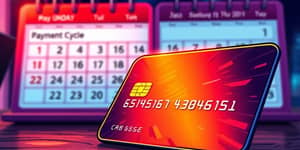
In today’s fast-paced world, convenience and security have never been more important. Digital wallets are transforming the way we pay, offering both speed and peace of mind. Whether you’re shopping online or tapping to pay in a store, a properly configured digital wallet can make every transaction a breeze.
With options like Apple Pay, Google Wallet, and PayPal leading the charge, more consumers are discovering the power of storing their credit cards in their devices. This article will guide you through everything you need to know—from setup to optimization—to ensure you enjoy a seamless payment experience and convenience every time.
A digital wallet is a software-based solution that securely stores your payment credentials, loyalty cards, tickets, and even digital IDs. Rather than fumbling for your physical wallet, you simply tap or click to complete transactions both in-store and online.
Leading platforms include Apple Pay, Google Wallet/Google Pay, Samsung Pay, and PayPal. They leverage NFC (near-field communication), tokenization, and biometric authentication to keep your data safe while making payments faster and easier.
From increased security to unparalleled convenience, digital wallets pack a powerful punch. Consider these key benefits:
Globally, digital wallets now handle 61% of e-commerce payments and 46% of point-of-sale (POS) transactions. In the U.S., digital wallet payments are 25% higher in average value than conventional card transactions—proof that consumers trust and spend more when checkout is frictionless.
Businesses stand to gain significantly by enabling digital wallet payments. Benefits include:
Platforms like Stripe and Shopify make integration straightforward, letting merchants accept Apple Pay, Google Pay, Samsung Pay, and more with minimal development effort.
Here’s a quick comparison to help you decide which wallet to start with:
Ready to get started? Follow these steps to add your credit card to your chosen digital wallet:
1. Open the wallet app on your device. For Apple Pay, tap the Wallet icon; for Google Wallet, open the Google Wallet app; for Samsung Pay, launch the Samsung Pay app.
2. Tap “Add Card” or the “+” symbol. Use your camera to scan the card or enter details manually. Ensure you enter the expiration date and security code correctly.
3. Verify your identity. You might use Face ID, Touch ID, a fingerprint scan, or a one-time SMS code sent by your bank. Some issuers require you to install their app to complete verification.
4. Wait for confirmation. Your bank may take a few moments to authenticate. Once approved, your card appears in your wallet, ready to use.
While digital wallets are built for safety, adopting best practices can further protect you:
- Keep your device’s operating system and wallet app updated to benefit from the latest security patches.
- Enable biometric authentication to prevent unauthorized users from accessing your wallet.
- Monitor transactions regularly within your wallet or banking app to catch any suspicious activity early.
- In case of device loss, use your phone’s remote lock or wipe feature to safeguard your data.
Beyond standard payments, digital wallets offer extra perks. Many apps allow you to:
For businesses, integrating digital wallets can boost repeat sales and foster customer loyalty. For consumers, the ease of setup and use often leads to more confident spending and fewer abandoned carts.
Digital wallets continue to evolve with innovations like in-app peer-to-peer payments, cryptocurrency support, and advanced loyalty integration. As adoption grows, expect new features that further blur the line between your physical wallet and your digital one.
Embrace the future of payments today by adding your credit card to a digital wallet. Enjoy quick contactless transactions in-store, effortless online checkouts, and robust security measures that protect your financial data around the clock.
Whether you’re a consumer seeking convenience or a merchant aiming to boost sales, digital wallets offer a powerful solution. Take the first step now and witness how reduced fraud and chargeback risks and a truly frictionless checkout experience can transform your payment journey.
References













